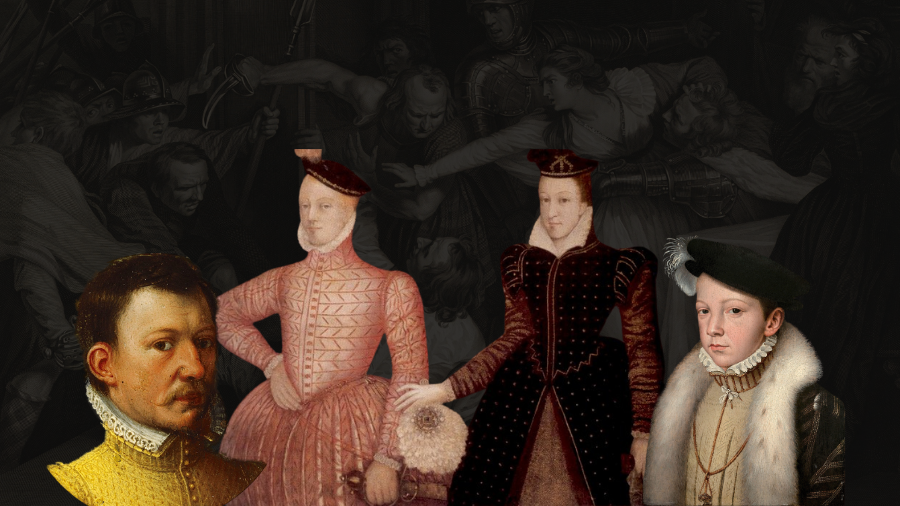The Tragedies of Mary, Queen of Scots
12th Feb 2025Historically, February was not a good month for Mary, Queen of Scots. Through the years, February brought assassination plots, flees to safety, meetings with ill-fated husbands and eventually, a death warrant.
Who was Mary, Queen of Scots?
Mary, it would appear, was born to rule. The only surviving (legitimate) child of King James V, she inherited the throne of Scotland at just 6 days old. By 6 years of age, she was betrothed to the future King of France, and married to Francis II at 15 years old.
By age 17, she was a widow.
Mary returned to Scotland during a time of tense religious and political upheaval, known as the Scottish Reformation, when reformers posed the question of whether her own subjects truly had a duty to obey her as queen.

left to right: Earl of Bothwell, Lord Darnley, Mary Queen of Scots, Francis II of France; background: murder of David Rizzio
February: the month of bad luck
Mary's bad luck began before her move to France. If we rewind to February 1548, Mary is 5 years old. After seeking refuge at Inchmahome Priory, Mary was then moved to Dumbarton Castle for protection from the English army's move to Haddington.
Months later, her marriage agreement was settled and Mary was sent to live in France. As we know, her life there didn't go to plan.
Marrying Lord Darnley
Mary both met and lost her second husband in February.
It was in February 1561, not long after the death of Francis, that Mary first met Henry Stuart, Lord Darnley: her second husband and first cousin. They met again 4 years later in February 1565 and were married later that year. Mary lovingly referred to Darnley as the ‘long lad,’ on account of his 6-foot frame—tall for the 16th century.
It was also in February, 2 years later, that Darnley was murdered. The house he resided in here in Edinburgh exploded in the middle of the night, and his body was later found in the garden, apparently smothered.
Mary’s third husband, the 4th Earl of Bothwell, was largely implicated in the death.
Though, we also can't forget that before he was murdered, Darnley had Mary’s private secretary murdered for fear of an affair between the two. Valentine's Day, one must assume, would have been a very messy day for Mary.
The end of her reign
The last 20 years of Mary’s life were fraught with hardships. She was abducted, imprisoned and forced to abdicate her throne in favour of her 1-year-old son, the future King James I of England. Mary fled to England, seeking safety from her cousin, Queen Elizabeth I of England.
Instead of aiding, Elizabeth confined Mary in a series of castles and manors. The two never met.
In 1586, Mary was implicated in the Babington Plot, a plan to assassinate Elizabeth. On 1 February of that year, Elizabeth signed Mary’s death warrant.
Mary, Queen of Scots was executed on the morning of 8 February 1587, bringing an end to the tumultuous life of one of Scotland’s most well-known figures.
Explore the lives of other Scottish figures, from monarchs to everyday citizens, on our Secrets of Edinburgh’s Royal Mile tour. The tour will even bring you to Edinburgh Castle, leaving you to roam the halls Mary herself once explored.


